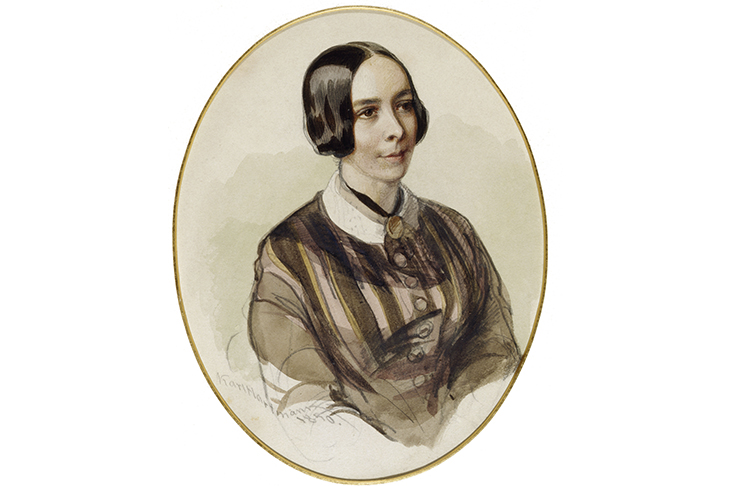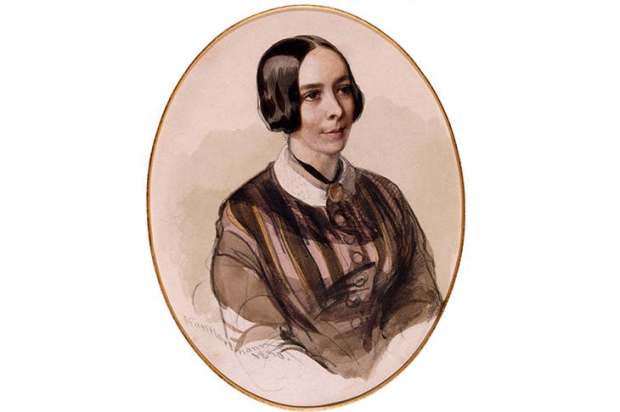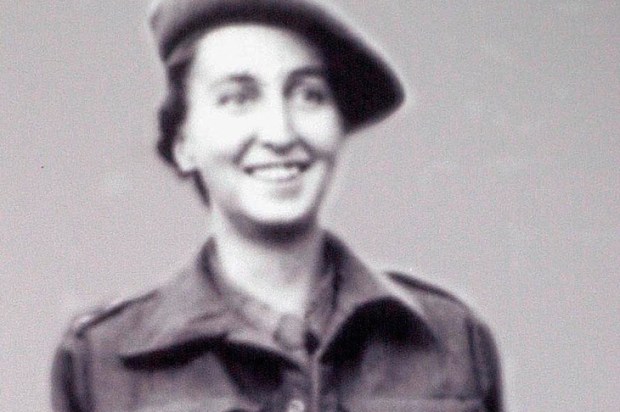One hour in No. 5 Cheyne Row, Virginia Woolf observed, will tell you more about the Carlyles than all the biographies. The house lived in by Thomas and Jane Carlyle from 1834 until their respective deaths, and now owned by the National Trust, was one of the great battlegrounds of domestic history. Here Jane warred against bedbugs and coal dust and her husband’s obsession with the vast and unstoppable Lady Harriet Ashburton (there were three people in her marriage), and Carlyle warred against the intrusions of the outside world. While next door’s rooster kept him awake at night, by day, as Jane wrote in one of her peerless letters, he was disturbed by
men, women, children, omnibuses, carriages, glass coaches, street coaches, wagons, carts, dog-carts, steeple bells, doorbells, gentleman raps, twopenny-post-raps and footmen-showers-of raps.
Not to mention the dutiful piano-practising of the girl in the adjacent house, the racket of hawkers, organ-grinders and washer-women, and the hourly chiming of the old Chelsea clock. No man could write under these conditions, and soundproofing his study made little difference.
Thomas Carlyle is now more famous for his feisty wife than his life of Frederick the Great, and observers of their marriage disagree over who was the most long-suffering. For some, he was the victim of a shrew who mockingly recorded his every gesture; for others she was the victim of a brute who failed to see her brilliance. ‘Being married to him’, said Jane’s friend Anna Jameson — having just braved the consequences of interrupting the sage in one of his monologues — must be ‘something next worse to being married to Satan himself’. Samuel Butler refused to take sides. ‘It was very good of God to let Carlyle and Mrs Carlyle marry one another,’ he quipped, ‘and so make only two people miserable and not four.’ Their quarrels might have been spared, thought Woolf as she toured the house, had the Carlyles possessed hot and cold running water. Domestic tensions are inevitable when taking a bath requires the maid, supervised by her mistress, to pump water from the well, boil it on the range, and transport it — soundlessly, of course — in bucketloads up three flights of stairs.
Kathy Chamberlain, in this hugely satisifying new life, is firmly in Jane’s camp, but she has no interest in making a martyr of her subject. Chamberlain’s Jane is a complex heroine, caught between a fierce regard for convention and the high romance of rebellion. Her closest male friend, after all, was Guiseppe Mazzini, the father of modern Italy, who was in exile in London until 1848.
Trimming away the fat of the story, Chamberlain focuses on the years 1843–1849, when the Carlyes are nearly 20 years into their marriage. Jane is in her forties and Carlyle, now famous for his novel, Sartor Resartus and his history of the French Revolution is suffering agonies over his life of Cromwell, the first draft of which he has just thrown on the fire, watched by his notetaking wife. They are childless, but apparently not unhappily so; their marriage is probably sexless; they sleep, at least, in separate rooms, although this might be due to mutual insomnia. We get brief snapshots of their previous life in Craigenputtock, Dumfriesshire, of his background as the son of a Calvinist stonemason and hers as the daughter of a doctor, and we are occasionally reminded of the crippling remorse he will feel following her death in 1866, when he discovers, from her writing, how unhappy she had been. But for the moment the Carlyles are carrying on the business of their daily lives.
Drawing from the 44 volumes of their letters and journals, Chamberlain catches Jane on the wing: supervising the servant, stitching the curtains, nailing down the carpet, smoking in her bedroom, sitting up late with Tennyson and smoothing her skirts when Mazzini comes to call. Also included amongst her friends are a Sapphic German governess called Amely Bolte, another young German abroad called Richard Plattnauer, who suffers from severe manic depression, and the novelist Geraldine Jewsbury. At the centre of her life, however, is her rival Lady Ashburton, whose invitations for prolonged visits cause Jane agony.
‘The story begins,’ writes Chamberlain, ‘inside a house’, and for the most part, unless she is marooned in one of Lady Ashburton’s mansions or visiting friends in the north in protest against the presence of Lady Ashburton, the story stays in Jane’s Chelsea house, where she is sometimes miserable, often ill, always busy, and at her happiest when, as she puts it, ‘splashing off whatever is on my mind’ in missives to her circle.
Jane’s letters, which have lost nothing of their freshness and mischief, take us immediately into her world, or rather into the world as she chose to construct it. She saw her letters as a roman fleuve — ‘I must go on’, she writes to a friend, ‘to the end of the chapter’ — in which she recorded conversations, sketched what she called ‘dramas in one scene’ (such as Carlyle’s throwing his Cromwell manuscript into the fire), and reshaped her days for comic effect. This is an example of a ‘drama in one scene’, in which Jane describes being cornered at a party by the rancid old gossip Samuel Rogers:
SR (pointing to a chair beside him): Sit down, my dear — I want to ask you, is your husband as much infatuated as ever with Lady Ashburton?
JC: Oh, of course (laughing). Why shouldn’t he?
SR: Now – do you like her her? – tell me honestly is she kind to you — as kind as she is to your husband?
JC: Why you know it is impossible for me to know how kind she is to my husband…
While Carlyle, who told us that ‘history was the biography of great men’, wrestled with his marathons in his attic study, Jane, poised in her parlour, threw off mock epics in which she starred as a Herculean housewife. What Woolf failed to see, and what Chamberlain fully appreciates, is that Jane liked housework. She liked the business of pumping and boiling and carrying water. A proud and fastidious Scot, she approached domestic combat with vigour and gusto. Her comic companion throughout these years is her tiny, alcoholic Scottish servant, Helen Mitchell: ‘I think, talk, and write about my own servant,’ Jane noted, ‘as much as Geraldine does about her lovers.’ Helen, who observes Jane as closely as Jane observes Helen, possessed, when sober, what Carlyle called ‘an intellectual insight almost of genius’.
Jane’s letters, which were famous in her lifetime, constituted what Elizabeth Hardwick has called ‘a private writing career’, but they were not private objects. They were written to be read aloud, passed around, quoted. She wrote for entertainment. Opening a letter from Jane, said Mrs Gaskell, ‘I begin speech with you.’ Chamberlain likens Jane Carlyle to Jane Austen (there is a touch of Mr Collins in Carlyle and of Lady Catherine de Burgh in Lady Ashburton), but the Carlyes, who thought Austen’s novels were ‘washy watergruel’, would not have appreciated the comparison.
It is Chamberlain’s own style which makes this book such a happy read. Choosing Jane’s free-associative ‘splashing’ over Carlyle’s solid biographical template, Chamberlain speaks with us. Talking about Mazzini, for example, who is sitting in Jane’s parlour looking tragic and handsome, Chamberlain tells us about the school he has set up for impoverished children, ‘such as the organ-grinder boys, hawkers of plaster casts, and trinket sellers who were common figures on the London streets’. This leads her to note how very much Carlyle disliked the noise made by impoverished children such as these, and how Helen Mitchell would order them, through an opened window, to ‘move on’. It reminds her of the story told by Henry Mayhew about an organ-grinder boy, which Chamberlain in turn then tells us, eventually returning to poor Mazzini in the parlour and his fondness for Jane, who he described as ‘the woman I value most in England’.
Later, when Mazzini returns to Italy and the Roman Republic is being established, Jane, Chamberlain tells us, ‘had to confront a very special crisis in her kitchen’. Helen Mitchell was drunk again — ‘her mouth covered with blood’, wrote Jane, ‘her brown cheek and dark dress whitened with the chalk of the kitchen floor… her hair streaming wildly from under a crushed cap — and her face wearing the smile of idiotic self-complacency’.
I’m not going to say what happened next. You have to buy the book, which you’ll then read aloud, pass around, and quote from. Jane Carlyle is back with a vengeance.
Got something to add? Join the discussion and comment below.
Get 10 issues for just $10
Subscribe to The Spectator Australia today for the next 10 magazine issues, plus full online access, for just $10.
You might disagree with half of it, but you’ll enjoy reading all of it. Try your first month for free, then just $2 a week for the remainder of your first year.














Comments
Don't miss out
Join the conversation with other Spectator Australia readers. Subscribe to leave a comment.
SUBSCRIBEAlready a subscriber? Log in